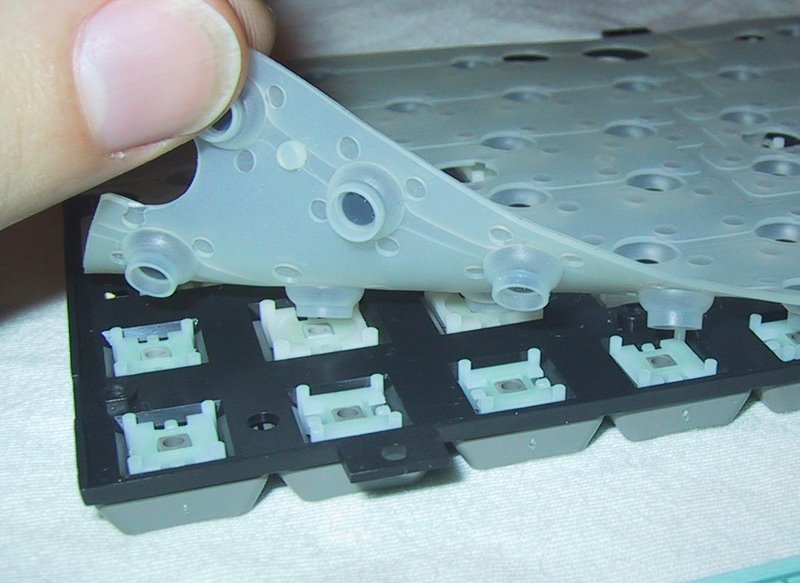Why Choosing the Right Membrane Switch Is Crucial for Your Product Layout
Why Choosing the Right Membrane Switch Is Crucial for Your Product Layout
Blog Article
Exactly How Membrane Layer Switches Contribute to the Durability of Electronic Control Panels
Membrane buttons play a vital role in improving the longevity of digital control panels, largely through their multi-layered building which gives efficient defense versus environmental variables such as dampness and dust. The absence of moving parts substantially lowers the likelihood of mechanical failures, making membrane switches over suitable for requiring applications.
Definition of Membrane Buttons

Membrane layer buttons are developed to be thin and light-weight, making them suitable for applications where room is restricted. They can be manufactured in various shapes, sizes, and colors, supplying versatility in layout that fulfills aesthetic and functional requirements. Furthermore, membrane layer buttons can incorporate numerous technologies, such as responsive feedback and LED signs, improving customer experience.
Due to their building and construction, membrane switches are often immune to dirt, moisture, and basic wear, contributing to their sturdiness in demanding atmospheres. Their seamless layout not only promotes very easy cleansing but likewise minimizes the risk of mechanical failing, making them a preferred selection for makers seeking trustworthy interface in their digital control panels.
Protection Versus Environmental Aspects
The layout of membrane layer changes inherently offers a level of security against numerous ecological variables, which is crucial for maintaining performance in difficult conditions - Membrane Switch. These switches are generally constructed with layers of versatile materials that secure interior components from wetness, dirt, and contaminants. By enveloping the circuitry, membrane layer changes decrease the threat of short circuits and deterioration, which can dramatically harm efficiency
Furthermore, making use of robust adhesives and sealers throughout production enhances their resistance to ecological difficulties. Membrane layer switches can sustain exposure to chemicals and solvents, making them appropriate for industries such as food processing and health care, where health and sanitation are extremely important. Their seamless surface area design likewise avoids the build-up of dirt and microorganisms, facilitating less complicated cleaning and upkeep.
Temperature level variations are one more environmental problem, and membrane buttons are crafted to function successfully across a large range of temperature levels (Membrane Switch). This adaptability ensures that control panels stay operational in various setups, from industrial settings to consumer electronics
Effect on User Interaction
Individual communication with digital control board is considerably affected by the layout and functionality of membrane buttons. These buttons give a tactile interface that improves the general individual experience, permitting intuitive navigating and control. Their receptive nature makes certain that users get instant feedback upon activation, which is critical for jobs requiring precision and effectiveness.
Moreover, the smooth surface of membrane layer switches over assists in very easy cleaning and upkeep, promoting user self-confidence in the dependability of the interface. This cleanliness is particularly important in environments where hygiene is paramount, such as medical or food processing settings. Furthermore, the portable and lightweight style of membrane switches over adds to the visual appeal of control panels, motivating customer interaction via a modern and smooth appearance.
Moreover, the assimilation of visual aspects, such as printed icons and backlighting, assists customers rapidly identify functions, lowering the learning curve related to new tools. Because of this, users can operate tools better, resulting in raised productivity and satisfaction. In summary, membrane layer switches play an essential duty in boosting user interaction by combining performance, appearances, and ease of usage, eventually bring about boosted functional efficiency.
Style Versatility and Modification
Design versatility and modification are crucial elements of membrane layer buttons, enabling manufacturers to tailor electronic control panels to specific applications and individual needs. This versatility permits for the combination of different layout elements, such as colors, graphics, and appearances, which can improve the visual charm and customer interaction of the control board.
Membrane buttons can be tailored in dimension and form, suiting a vast array of gadgets and applications, from commercial equipment to consumer electronics. This Learn More flexibility ensures that manufacturers can produce instinctive interfaces that align with customer assumptions and functional needs. Additionally, the ability to incorporate one-of-a-kind attributes such as backlighting or tactile responses better boosts functionality, permitting for a more interactive experience.
Furthermore, the manufacturing procedure for membrane changes sustains the fast prototyping of designs, making it possible for producers to iterate and fine-tune their ideas swiftly. This ability not only accelerates the advancement timeline but additionally ensures that the end product satisfies certain practical and visual standards.

Cost-Effectiveness and Long Life
Cost-effectiveness and durability are substantial advantages of membrane switches, making them an attractive choice for makers and end-users alike. These switches are typically check that more economical to create than conventional mechanical buttons, primarily because of their simplified manufacturing procedures and the lowered variety of parts required. This expense benefit expands not only to preliminary manufacturing however also to long-lasting functional costs, as membrane layer switches commonly need much less maintenance and have a lower failure rate.
Furthermore, the longevity of membrane switches adds to their overall value. Built from long lasting materials, they are immune to environmental aspects such as moisture, go dust, and chemicals, which can bring about premature wear in various other switch kinds. The lack of relocating parts minimizes mechanical failing, allowing membrane switches to keep functionality over extended periods.
This durability is specifically beneficial in applications needing regular efficiency under demanding conditions, such as medical devices and commercial equipment. Inevitably, the combination of cost-effectiveness and longevity makes membrane changes a financially viable option for manufacturers, providing dependable solutions that stand up to the examination of time while enhancing financial considerations.
Conclusion
In conclusion, membrane layer switches significantly improve the longevity of digital control panels through their robust construction and safety attributes - Membrane Switch. Generally, membrane layer switches represent a trustworthy and cost-efficient choice for enhancing the longevity and performance of digital control systems.
Report this page